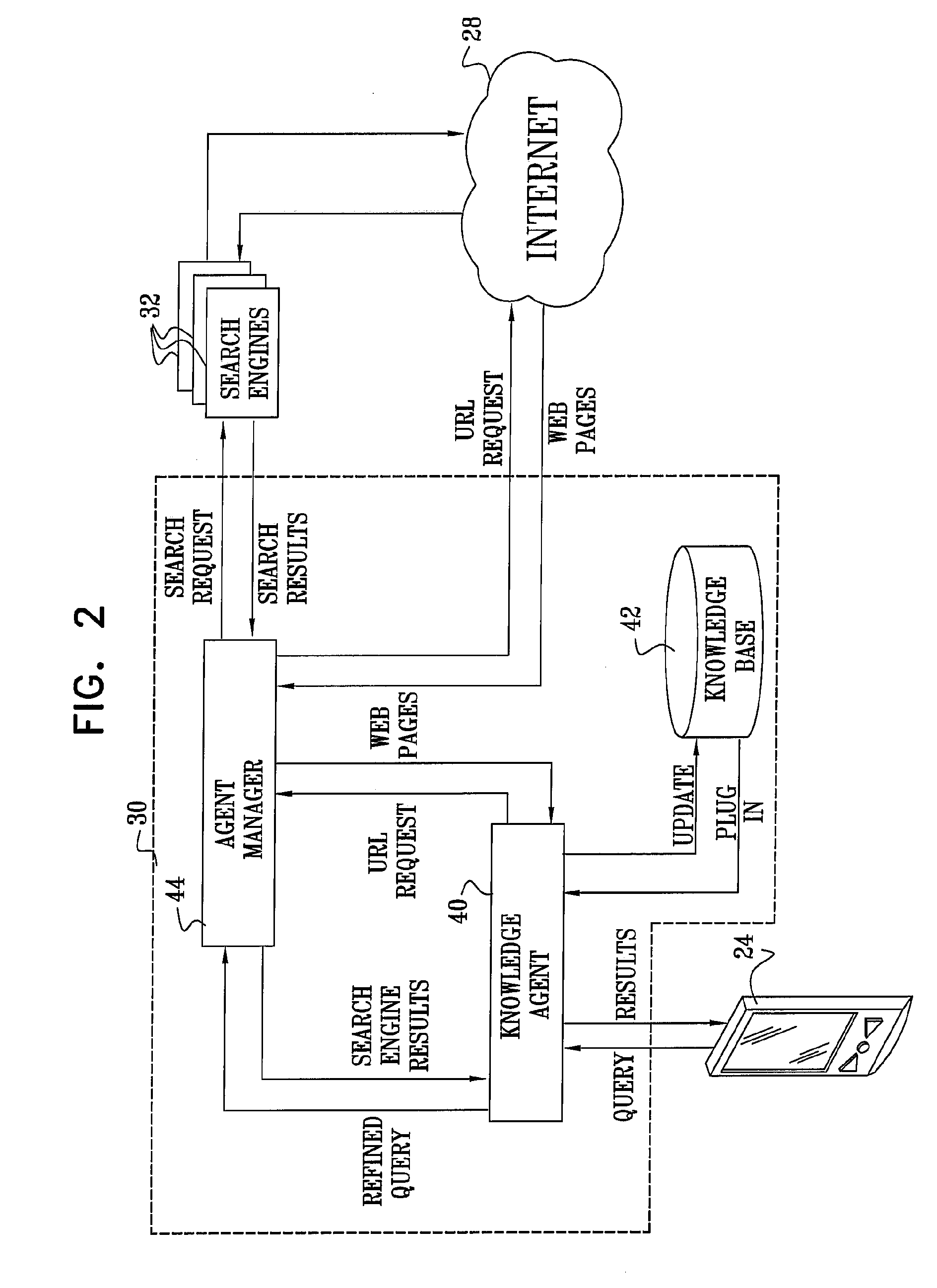Information search using knowledge agents
a technology of knowledge agents and information search, applied in the field of information search using knowledge agents, can solve the problems of difficult to find information on the world wide web, the model of interactive search does not align well with the pervasive computing device, and the device is much less facilitativ
- Summary
- Abstract
- Description
- Claims
- Application Information
AI Technical Summary
Benefits of technology
Problems solved by technology
Method used
Image
Examples
Embodiment Construction
[0073]FIG. 1 is a schematic, pictorial illustration of a system 20 for information search and retrieval, in accordance with a preferred embodiment of the present invention. A user 22 uses a computing device 24 to connect to a network 28, typically the Internet, and to conduct a search among information repositories, such as Web sites 26. Device 24 is shown in the figure to be a pervasive device, such as a palm device or handheld computer. Alternatively, however, device 24 may comprise a desktop computer or other computer workstation.
[0074]The search is preferably conducted by means of a knowledge server 30. This server may comprise substantially any suitable general-purpose computer processor having a connection to network 28. It is referred to herein as a server because of its server-client relationship with device 24. Alternatively, the functions of device 24 and server 30 are combined, so that user 22 works directly on the “server” without a separate client device. Device 24 and ...
PUM
 Login to View More
Login to View More Abstract
Description
Claims
Application Information
 Login to View More
Login to View More - R&D
- Intellectual Property
- Life Sciences
- Materials
- Tech Scout
- Unparalleled Data Quality
- Higher Quality Content
- 60% Fewer Hallucinations
Browse by: Latest US Patents, China's latest patents, Technical Efficacy Thesaurus, Application Domain, Technology Topic, Popular Technical Reports.
© 2025 PatSnap. All rights reserved.Legal|Privacy policy|Modern Slavery Act Transparency Statement|Sitemap|About US| Contact US: help@patsnap.com



